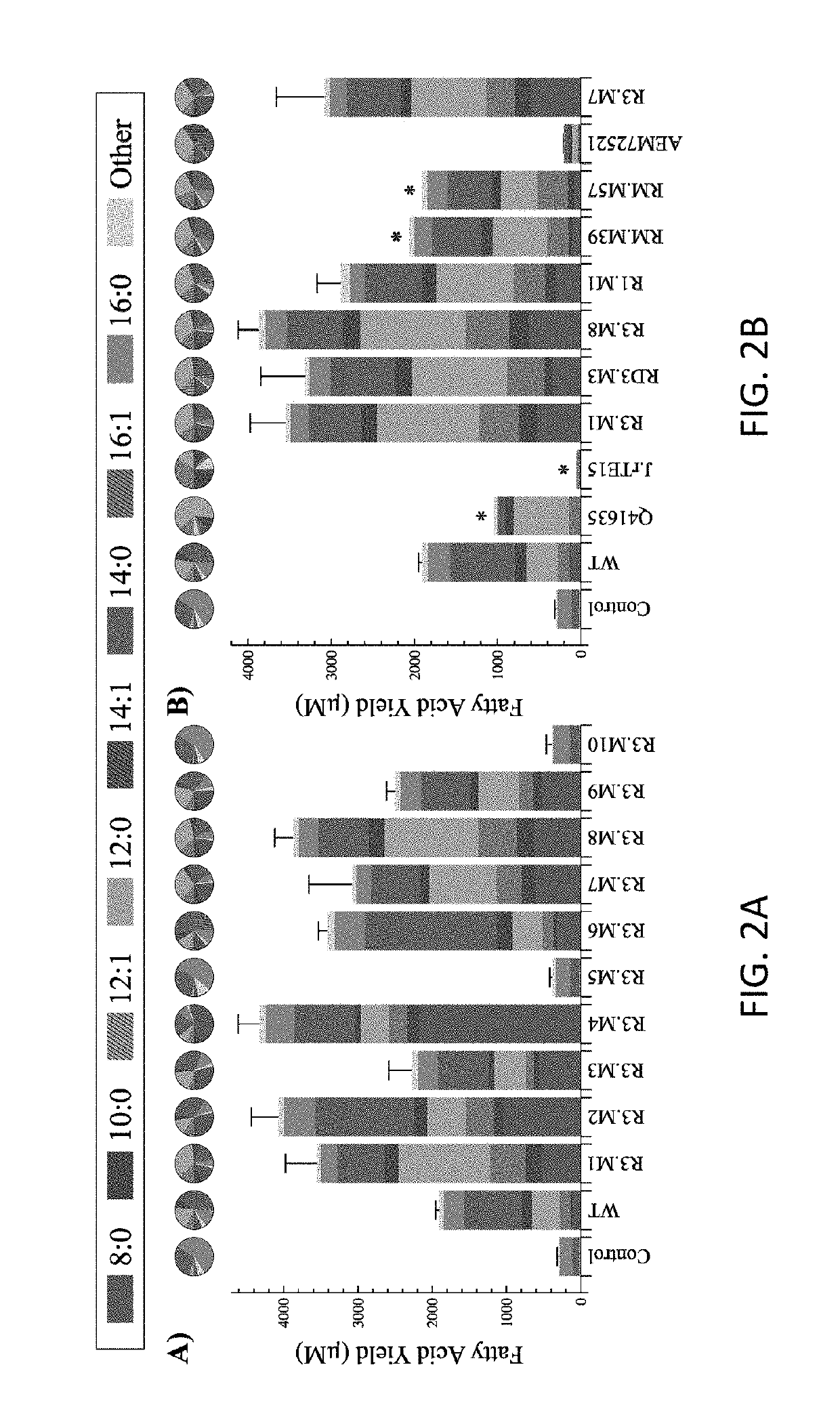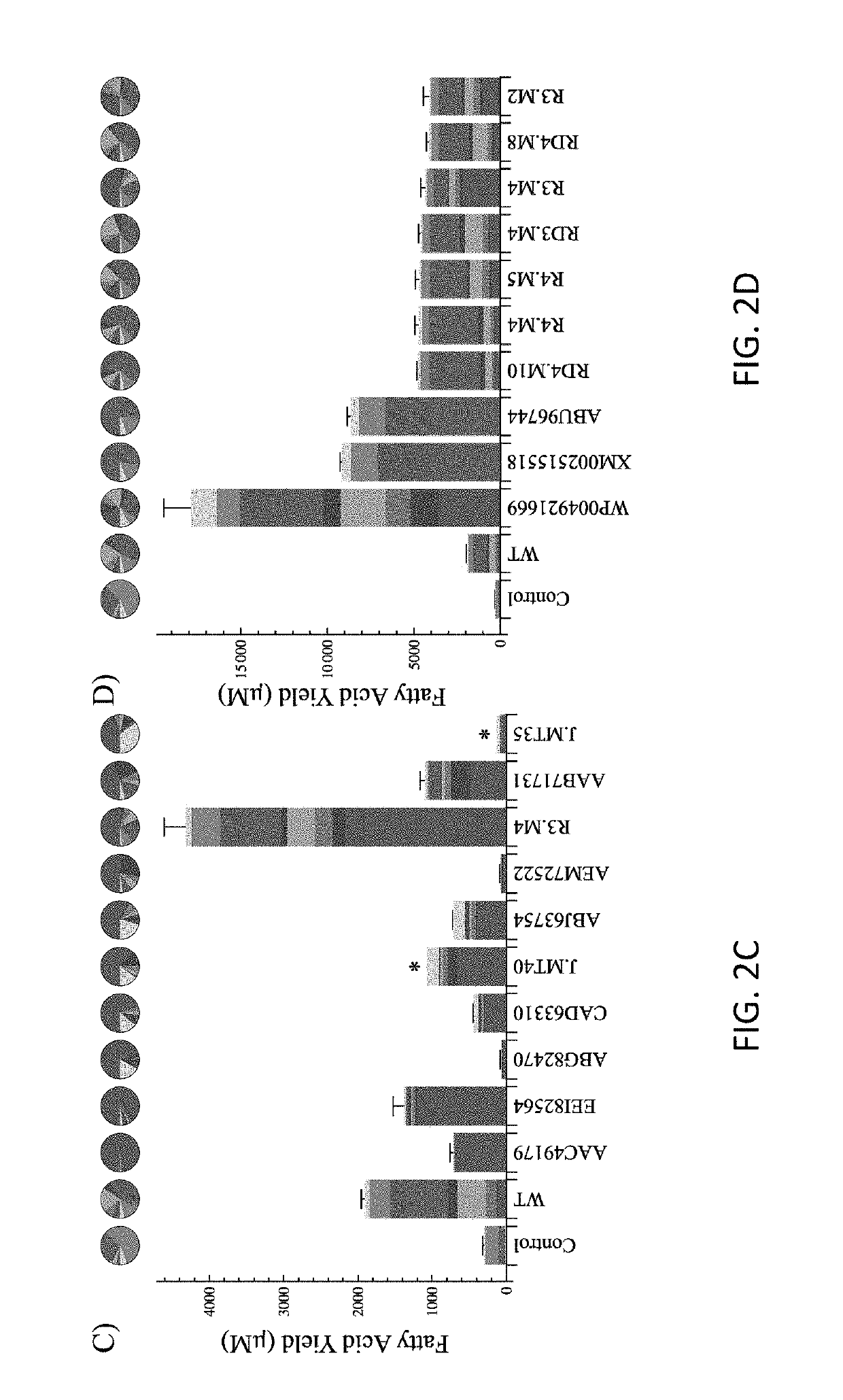Gene construct encoding mutant thioesterase, mutant thioesterase encoded thereby, transformed host cell containing the gene construct, and method of using them to produce medium-chain fatty acids
- Summary
- Abstract
- Description
- Claims
- Application Information
AI Technical Summary
Benefits of technology
Problems solved by technology
Method used
Image
Examples
examples
[0088]The following Examples are included to provide a more complete disclosure of the gene constructs, mutant thioesterases and transformed hosts described and claimed herein. The Examples do not limit the scope of the claims.
‘TesA Model Construction:
[0089]The 3-dimensional, X-ray crystal structure of ‘TesA was taken from PDB 1U8U (Protein Data Bank, http: / / www.rcsb.org), where it is in complex with caprylic acid. (Lo. Lin. Shaw. and Liaw, (2005) “Substrate specificities of Escherichia coli thioesterase I / protease I / lysophospholipase L1 are governed by its switch loop movement.”Biochemistry 44:1971-1979.) The acyl-ACP structures were adapted from PDB 2FAE, where capryl-ACP is held in an internal binding cavity. (Roujeinikova A. et al. (2007) “Structural studies of fatty acyl-(acyl carrier protein) thioesters reveal a hydrophobic binding cavity that can expand to fit longer substrates,”J Mol Biol 365(1):135-145.) In order to dock capryl-ACP with ‘TesA, the acyl chain was systematica...
PUM
| Property | Measurement | Unit |
|---|---|---|
| Fraction | aaaaa | aaaaa |
| Fraction | aaaaa | aaaaa |
| Volume | aaaaa | aaaaa |
Abstract
Description
Claims
Application Information
 Login to View More
Login to View More - R&D
- Intellectual Property
- Life Sciences
- Materials
- Tech Scout
- Unparalleled Data Quality
- Higher Quality Content
- 60% Fewer Hallucinations
Browse by: Latest US Patents, China's latest patents, Technical Efficacy Thesaurus, Application Domain, Technology Topic, Popular Technical Reports.
© 2025 PatSnap. All rights reserved.Legal|Privacy policy|Modern Slavery Act Transparency Statement|Sitemap|About US| Contact US: help@patsnap.com



